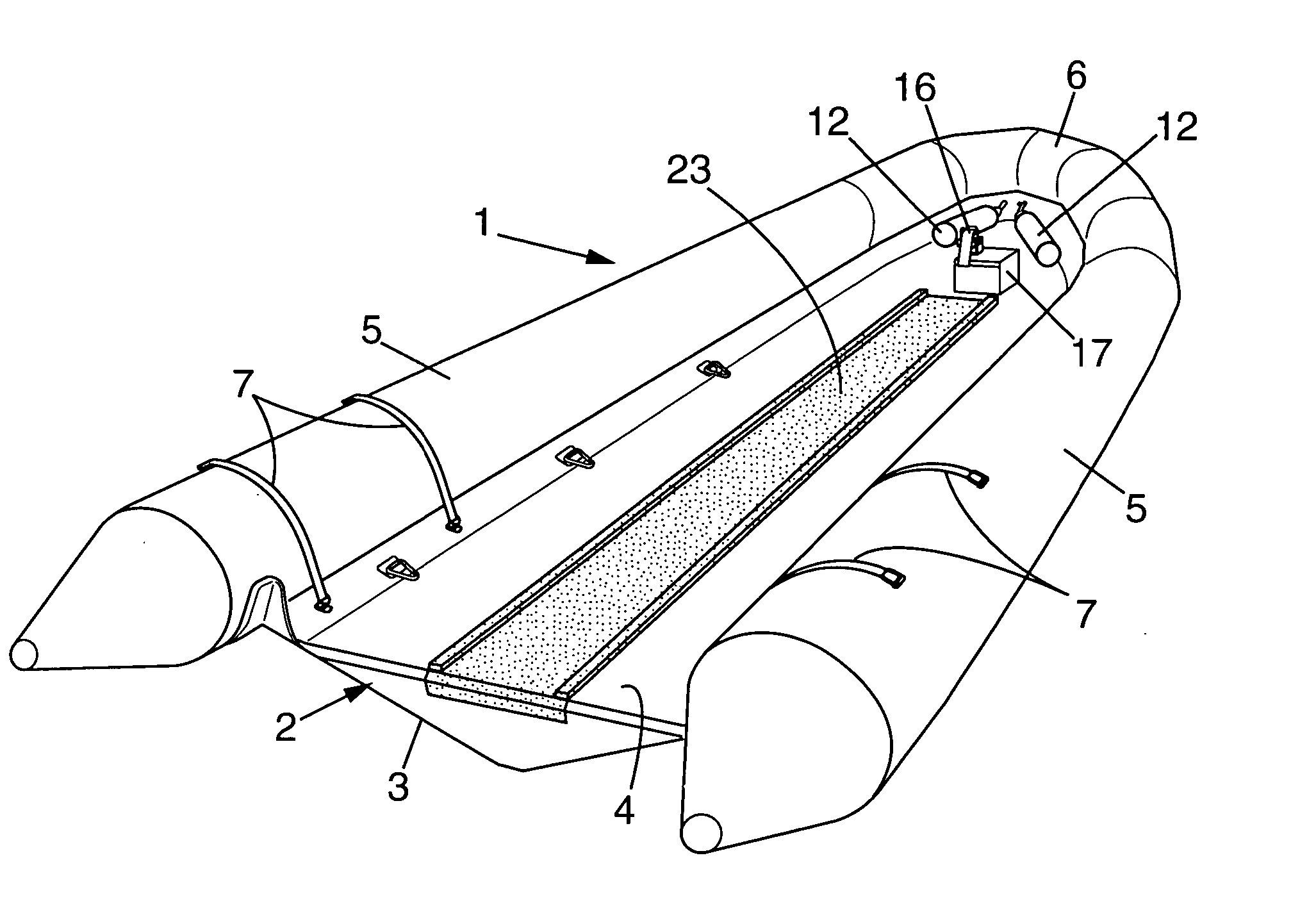Pneumatic boat arranged for the loading/unloading and transportation of floating loads
a pneumatic boat and load-loading technology, applied in the field of pneumatic boats, can solve the problems of large installation of transportation devices, and achieve the effects of low cost, simple design and low manpower
- Summary
- Abstract
- Description
- Claims
- Application Information
AI Technical Summary
Benefits of technology
Problems solved by technology
Method used
Image
Examples
Embodiment Construction
[0032] In the following description, reference will first be made to FIGS. 1 to 4.
[0033] The boat according to the invention, for transporting floating loads, is a pneumatic boat of the general type known as a semi-rigid boat 1, which includes a rigid hull 2 defined by a rigid underwater hull 3 closed on the top by a rigid floor 4 and bordered at least on two sides by two pneumatic floats 5. In general, the two floats 5 join up towards the bows at 6, above the stem of the underwater hull.
[0034] Unlike a traditional semi-rigid boat, the boat according to the invention has no rear board and thus no motor. Globally, therefore, it takes the form of a simple barge, as may be seen best in FIG. 1. Furthermore, owing to the absence of a motor, the rigid hull may be extended towards the rear substantially as far as the vicinity of the rear ends of the floats 5, such that the floor 4 has a maximum surface area.
[0035] The assembly of floats 5 may be fastened to the rigid hull 2 by any means...
PUM
 Login to View More
Login to View More Abstract
Description
Claims
Application Information
 Login to View More
Login to View More - R&D
- Intellectual Property
- Life Sciences
- Materials
- Tech Scout
- Unparalleled Data Quality
- Higher Quality Content
- 60% Fewer Hallucinations
Browse by: Latest US Patents, China's latest patents, Technical Efficacy Thesaurus, Application Domain, Technology Topic, Popular Technical Reports.
© 2025 PatSnap. All rights reserved.Legal|Privacy policy|Modern Slavery Act Transparency Statement|Sitemap|About US| Contact US: help@patsnap.com



